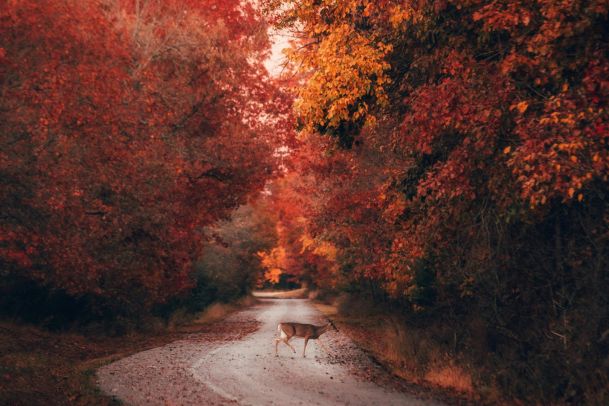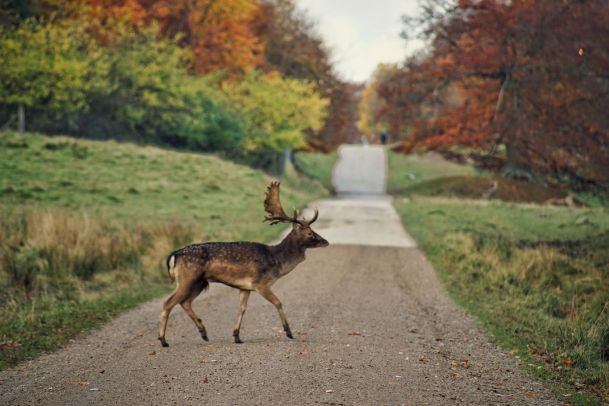
Written by Kayla Jane Barrie Updated on Oct 06, 2025 6 mins read

Having car insurance is the law, but simply having it isn't enough. You need to understand what your policy actually covers! Not all insurance is created equal, and many coverages are optional. A collision with a deer (or any other animal) is definitely not something to ignore – these accidents can cause serious damage and leave you stranded.
A run-in with wildlife can leave your vehicle in rough shape and your wallet feeling lighter. That's where car insurance steps in. But figuring out what's covered after a wildlife collision can be confusing. You're probably asking yourself:
Below, we discuss driving techniques to keep you and other drivers safe if you encounter wildlife on the road. We also clarify how a wildlife accident can affect your car insurance quotes and when you should contact your insurer to submit a claim.
Car insurance can cover damage from hitting a deer (or other animal). However, it's not automatic. You'll need the right type of coverage. It's always a good idea to chat with your insurance representative to ensure you have the right protection before an accident happens.
When you buy car insurance, you're often presented with a lot of options. While some coverages are legally required, others are optional but highly recommended. Here is a look at the two main types of coverage that come into play when dealing with wildlife collisions:
TLDR;
Hit the animal? Comprehensive.
Hit something else, avoiding the animal? Collision.
Also, contrary to what some people believe, liability insurance will not cover damage to your vehicle if you hit a deer. Third party liability only covers damage you cause to other people's property.
A collision with a deer, or any wildlife, would generally be covered under comprehensive insurance or all-perils. These are both option types of coverage that come with a small additional price – if you don’t have either, you may not be protected in the event of hitting wildlife. However, if you make multiple claims around the same time, you will likely see an increase.
Ontario is known for the most collisions with wildlife – around 14,000 are reported every year, according to the OPP. No matter what season it is, it’s a good time to brush up on some safety tips and precautions to take on the road.
Animals are active 24/7, however, the peak time of day for them on roads is between 6 p.m. and midnight. Studies show that the risk of hitting wildlife is higher during dusk and dawn, when light is lower, animals are most active.
Incidents also spike when driving in the fall because it is mating season for moose and deer. There is also an increase in spring due to animals coming out of hibernation and looking for food.
As you learn in driving school, your actions on the road should put your life and other drivers first. If you spot a deer or any wildlife on the road and it is too late to avoid an accident safely, here is what you should do to lessen the impact:

Encountering an animal on the road can be a frightening and unexpected experience. If you've unfortunately hit an animal while driving, it's crucial to react calmly and prioritize safety. This involves regaining control of your vehicle and pulling over safely, activating your hazard lights, and immediately calling 911 if anyone is injured. After ensuring immediate safety, inspect your vehicle and contact the appropriate authorities, whether it's 911 for a traffic hazard or animal control for an injured animal. Documenting the scene with photos for potential insurance claims and contacting your insurer with detailed information.
If you are in an accident with a deer or any wildlife on the road, here is what you should do:
The number of animals involved increased by 47% from 1999 to 2014 according to the Ontario Road Safety Annual Report. There are 14,000 wildlife-vehicle collisions happening in a year in Ontario. There are some ways we can prevent these accidents from happening.
Here are nine tips to prevent an accident with wildlife:
The Traffic Industry Research Foundation published a study about accidents that involve wildlife in Canada. Here is a look at some of their key findings:
A collision with a deer will be covered under comprehensive or all-perils policies. However, if you do not have these optional types of car insurance, you likely will not be covered.
If you hit a deer, in most cases you will need to pay your car insurance deductible. The amount you pay will be outlined in your policy.
Yes. Hitting a deer could be deemed as an at-fault accident – it depends on the situation and insurer. Some insurers will not consider hitting a deer at-fault, but you may be at-fault if you swerve and cause a collision with another vehicle or a guard rail.
If you hit a deer with your vehicle, it will be considered a comprehensive claim so it will go on your drivers abstract, but generally will not increase your costs.
There is no ticket or fine if you are involved in an accident with a deer.
Deer and other large wildlife can total your car if you are involved in an accident. It depends on the size of your vehicle, how fast you were driving, and where the animal was located.
| Categories | Auto |
|---|---|
| Tags | Auto CoverageAuto ClaimsAccidentsDriving Tips |
Read our insurance blog to get helpful tips, information and news.
Dive into the world of auto theft with our blog on the most stolen cars in Canada. See the most stolen cars across Canada, including provincial lists for Ontario and Quebec, and learn how high-risk models can affect your car insurance premiums.
Drive safe this winter! Check out these tips for driving in snowy and icy conditions in Ontario. Get other helpful info and FAQs on winter driving.
Drive safer this winter. Learn how the right set of winter tires drastically reduces stopping distance and risk on ice and snow. Get expert tips from your trusted insurance provider.
Ontario municipalities have until November 14 to remove all automated speed enforcement cameras following fast-tracked provincial legislation. This post breaks down why the government is removing them, the pushback from road safety advocates, and what alternative measures will replace them.